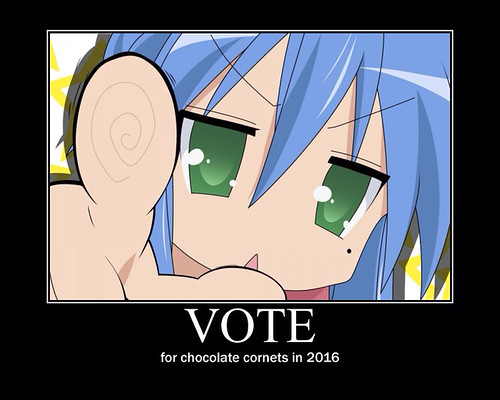@QX20XX does not have a Ph.D. in cultural studies, is not featured in any magazines or books, and only writes for anigamers.com. Once deemed "a great example of cognitive dissonance in action," QX started writing about anime as a joke, but that joke stopped being funny over a year ago. QX likes hamburgers, probably enjoys your least favorite anime, prefers Asuka over Rei, and dreams of designing a video game you will regret letting your children play.
Ask anyone for post-2000 anime recommendations and you're guaranteed to receive at least one of the following responses.
"You should watch
Aria."
"I definitely recommend
Aria."
"What do you mean you haven't seen
Aria?"
If I said
Mars of Destruction was the only anime I had seen from the year 2005, I wouldn't be lying except that
Akagi also happened to air in 2005.
What do you mean you haven't seen
Mars of Destruction?
Best known for its extensive catalog of
otome games, video game publishing company and development studio Idea Factory occasionally produces anime series and OVAs based on their properties. In 2005, Idea Factory produced a twenty-minute OVA for a visual novel they developed for the PlayStation 2,
Hametsu no Mars, or
Mars of Destruction. As best as I can commit it to words,
Mars of Destruction is a sci-fi story about a virus from Mars that arrives on Earth, infecting people in Tokyo and turning them into "Ancients". This woeful cartoon has the distinction of being one of, if not, the worst rated anime on both MyAnimeList and AniDB. For such a minor blip in the grand scheme of things, how does
Mars of Destruction get one over (under?) other legendarily awful productions such as
M.D. Geist and
Garzey's Wing?
Despite the game's rapid descent into obscurity, the tie-in anime that was destined from inception as a throwaway extra stands out as such a blinding example of terrible, it refuses to be forgotten long after the game proper was buried in a bargain bin. In a succinct twenty minutes,
Mars features a nonsensical story rife with clichés, regrettable acting and dialogue, thoughtless direction, amateurish animation, shameless parallels to
Evangelion, evisceration of generic anime girls, and the vocal talents of a young Chihara Minori (Yuki Nagato from
The Melancholy of Haruhi Suzumiya) who couldn't have known better. Being a mere promotional video attached to a low tier game release,
Mars of Destruction may not have been so disastrous as to shutter Idea Factory or force a renowned creator into early retirement, but it is exceptional in how immediate and aggressive it is in being bad. Thanks to its short run time and dubious interest from the rights holders, the anime is easily found on YouTube for the benefit of future generations of anime viewers.
I am aware I am being facetious. Since even I'm not comfortable saying
Mars of Destruction defines anime in 2005, let's talk about
Aria.



.bmp)







.bmp)











.bmp)

.bmp)






.bmp)

.bmp)






.bmp)



.bmp)

.bmp)


